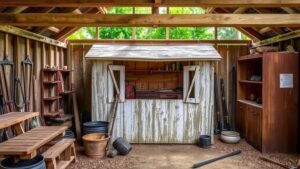Exploring Historical Barrel Maker Workshops for Cooperage Artifact Finds
Exploring Historical Barrel Maker Workshops for Cooperage Artifact Finds
The study of cooperage artifacts, derived from historical barrel maker workshops, offers invaluable insights into both the craftsmanship and cultural significance of barrel making throughout history. This article explores key findings from various archaeological sites and historical records, highlighting the evolution of cooperage techniques and the artifacts that emerge from these workshops.
The Evolution of Cooperage Techniques
Cooperage, the craft of barrel making, has its origins in ancient times, as evidenced by archaeological discoveries dating back to the Roman Empire. Early barrels were typically made from hollowed-out tree trunks; however, as techniques evolved, wood staves became the primary building material. According to historical documentation, by the 1500s, barrels had become essential for transporting and storing a wide variety of goods, including wine, spirits, and other liquids.
One significant example is the cooperage techniques utilized in the Bordeaux region of France. In the late 19th century, research conducted by André J. Perrot and Jean-Rougeau highlighted that barrel makers adapted their designs to enhance the aging process of wine. Specific findings reported that the use of different wood types, such as oak, greatly impacted the flavor profile of aged wines, demonstrating a direct relationship between barrel craftsmanship and product quality.
Notable Cooperage Workshops and Their Artifacts
Excavations of historical cooperage workshops, such as those found in early American colonies, reveal a wealth of artifacts that shed light on both the tools used and the products made. For example, the historic cooperage site located in Williamsburg, Virginia, exhibits a variety of tools including:
- Cooping axes
- Compass saws
- Hoops and stretchers
Artifacts from this site suggest that workshops were not only centers for production but also hubs for innovation, where techniques were refined and passed down through generations. The abundance of artifacts, such as charred barrel remnants, provides researchers with the ability to study the specific woods used, the aging techniques employed, and the overall quality of craftsmanship prevalent during the period.
Archaeological methodologies employed in cooperage studies often involve a combination of ground-penetrating radar (GPR) and traditional excavation. e advanced techniques allow researchers to identify potential workshop sites without extensive disruption to the soil layer. For example, a GPR survey conducted at the historic site of a cooperage in New England revealed hidden structures and tools buried beneath centuries of sediment.
Plus, the analysis of recovered artifacts is often supplemented by historical documentation. Academic studies, such as those presented in the Journal of Historical Archaeology, have combined artifact analysis with historical tax records to paint a more complete picture of cooperage production and market trends.
Case Studies of Cooperage Artifacts
Several notable case studies highlight the significance of cooperage artifacts in historical research. One pivotal study conducted at a cooperage site in Pennsylvania uncovered a series of barrel staves dated to the 18th century. The findings confirmed that local cooperages played a crucial role in the burgeoning American whiskey industry. Reports indicated that these barrels were integral during the period of rapid expansion in distillation practices, primarily between 1820 and 1860, when whiskey production in the United States surged by over 300%.
Also, the discovery of cooperage tools that were inscribed with maker marks provides direct links to specific craftspeople and their workshops, allowing for a deeper exploration of regional cooperage styles and practices.
Conclusion and Future Directions
Cooperage artifacts from historical barrel maker workshops provide a unique lens through which to understand the evolution of this craft and its significance in trade and daily life. As archaeological techniques advance, the potential for discovering untapped cooperage sites remains substantial. Future research should focus on interdisciplinary approaches, combining archaeology, history, and material science to unravel the complexities surrounding cooperage.
Through continued investigation, we can enhance our understanding of not only the craft of barrel making but also its broader implications on cultural and economic development throughout history.
